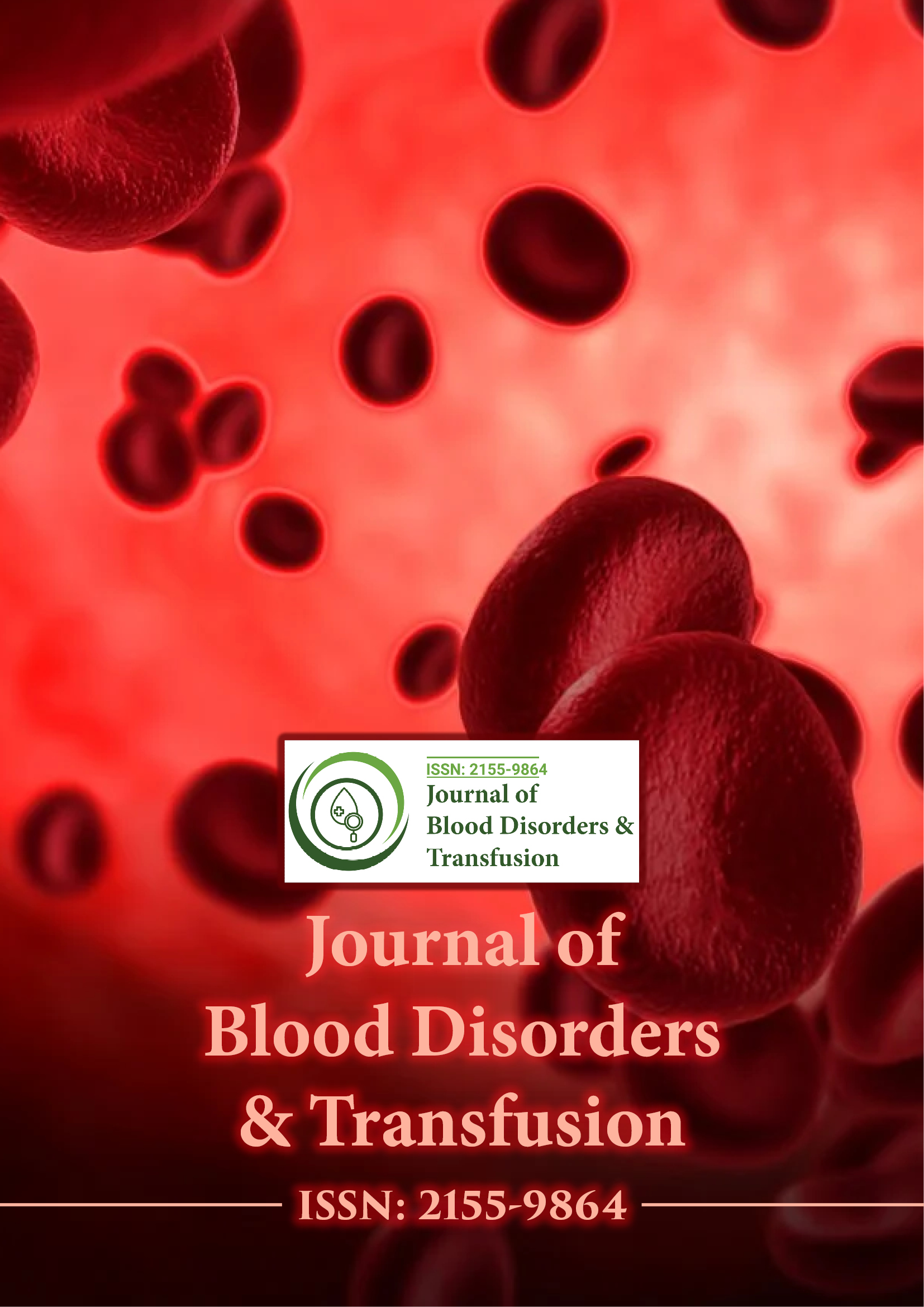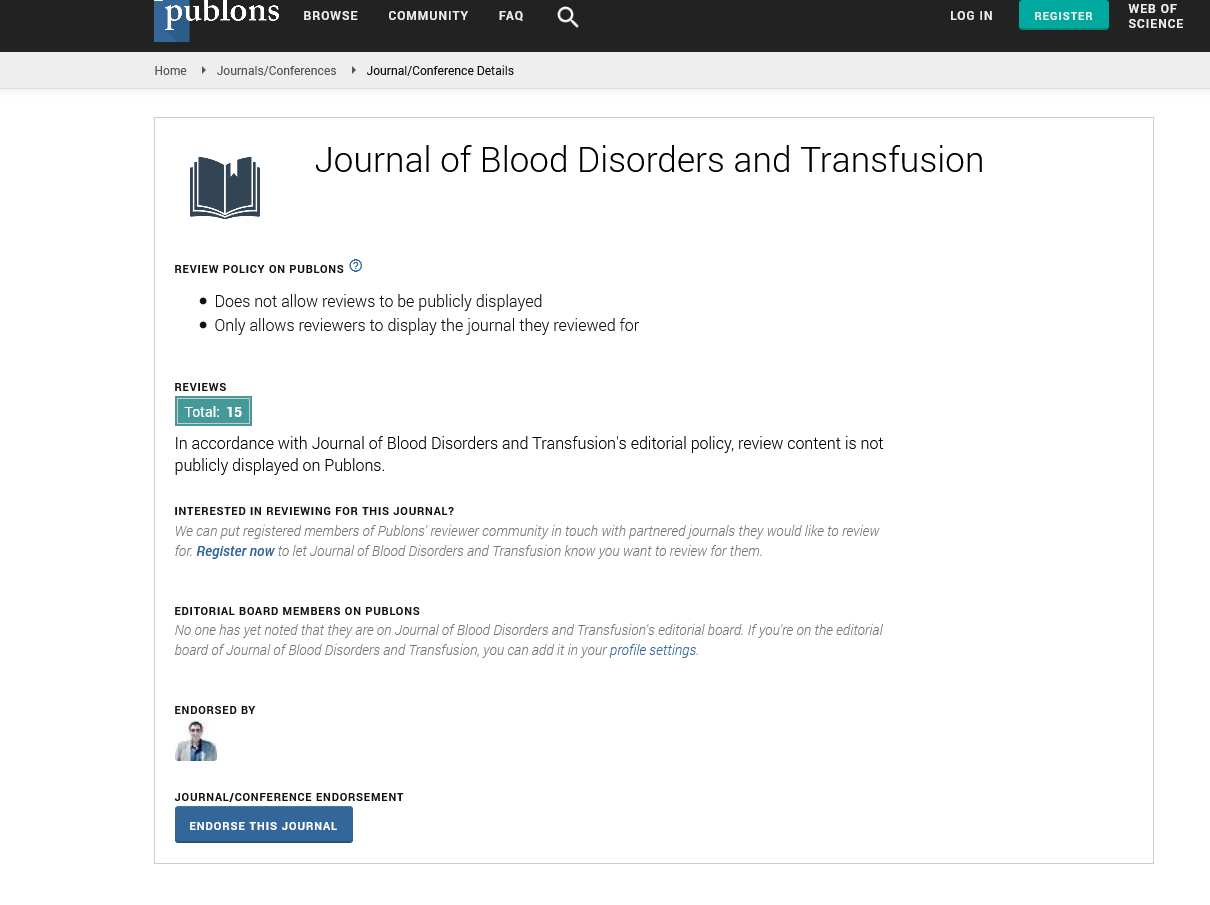Indexed In
- Open J Gate
- Genamics JournalSeek
- JournalTOCs
- Ulrich's Periodicals Directory
- RefSeek
- Hamdard University
- EBSCO A-Z
- OCLC- WorldCat
- Proquest Summons
- Publons
- Geneva Foundation for Medical Education and Research
- Euro Pub
- Google Scholar
Useful Links
Share This Page
Journal Flyer

Open Access Journals
- Agri and Aquaculture
- Biochemistry
- Bioinformatics & Systems Biology
- Business & Management
- Chemistry
- Clinical Sciences
- Engineering
- Food & Nutrition
- General Science
- Genetics & Molecular Biology
- Immunology & Microbiology
- Medical Sciences
- Neuroscience & Psychology
- Nursing & Health Care
- Pharmaceutical Sciences
Prevalence of malaria parasitaemia and methaemoglobin levels among blood donors in Sokoto, Nigeria
2nd International Conference on Hematology & Blood Disorders
September 29-October 01, 2014 DoubleTree by Hilton Baltimore-BWI Airport, USA
Augustine Okwesili, Isah IZ, Yakubu A, Ishaku EY, Erhabor O, Mainasara AS and Uko EK
Scientific Tracks Abstracts: J Blood Disorders Transf
Abstract:
Background: Safety of blood and blood products is of global concern in transfusion medicine especially as it concerns the transfusion transmissible malaria infection scourging the tropics. Malaria parasite also disrupts haemoglobin pigment converting haemoglobin to non functionalmethaemoglobin. This study was taken to determine the prevalence of malaria parasitaemia and methaemoglobin level among blood donors attending UsmanuDanfodiyo University Teaching Hospital Sokoto (UDUTH). Method: Two hundred and twenty eight (228) consecutively-recruited apparently healthy male blood donors aged 18 ? 45 years were tested for methaemoglobin level using themodified Evelyn and Malloy method. Malaria testing was done usingthin films made by push wedge technique prepared from the EDTA-anti-coagulated blood was stained with Giemsa stain. Parasite counts were reported per 500 white blood cells (WBC). The total parasite count was determined and result expressed as the number of parasites per microlitre of blood. Result: Among the 228 blood donors screened, 74 of the subjects representing 32.5% were positive for Malaria and 154 representing 67.5% tested negative. Plasmodium falciparum was responsible for all cases of parasitaemia. The mean parasite load among the parasitized donors was 228?99 parasites per microliter of blood. Among the malaria-infected donors, 60 (67.5%) had a parasite density of ≤500 μ/L, while 14 (6.2%) had a parasite density of 501? 10000 μ/L. The mean methaemoglobin levels among malaria infected donors was significantly higher (p=0.002) among plasmodium parasitized (2.75% and 3.55%) compared to non-parasitized donors (2.0%). We observed a significant positive correlation between parasite density and methaemoglobin level (r=0.72, p=0.001). Conclusion: This present study indicates a high prevalence of malaria among the blood donors studied. It may be justifiable for recipients of blood transfusion particularly neonates, children and pregnant women in malaria-endemic environment to be routinely treated with anti-malarial drugs as a prophylactic measure. We advocate for a mandatory universal donor-screening policy for malaria and for the exclusion of blood donors with malaria parasitaemia to further enhance blood safety in our environment.

